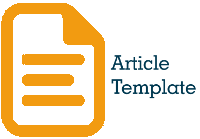WEB-BASED GEOGRAPHIC INFORMATION SYSTEM FOR MAPPING LANDSLIDE-PRONE AREAS OF SAMARINDA CITY USING THE SCORE AND WEIGHTING METHOD
DOI:
https://doi.org/10.35457/antivirus.v15i2.1723Keywords:
Geographical Information System, Landslides, Samarinda, Scoring and Weighting MethodAbstract
Landslide disaster occupies the second position of disasters that often occur in Samarinda City after the flood disaster and from this study the results of the level of vulnerability to landslides can be obtained. From the calculation results obtained 91.29% this application provides several aspects that can add information about landslide-prone areas and can provide useful information for recipients in the form of additional information related to landslides in Samarinda City. Samarinda City has an area of 718.00 km2 which has 10 sub-districts spread over several points in Samarinda City. There are four mappings used in this study, namely slope, soil type, rainfall and land use. Analysis of the data using the method of scoring and weighting where each of these parameters has a score and weight then performs an overlay technique to produce a map of landslide-prone areas. The application used is ArcMap in analyzing, calculating, making maps, evaluating units of each map that are influential (important) in landslide events.
Downloads
References
F. Faizana, A. Nugraha, and B. Yuwono, “Pemetaan Risiko Bencana Tanah Longsor Kota Semarang,” J. Geod. Undip, vol. 4, no. 1, pp. 223–234, 2015.
I. N. Sinarta, “Ancaman Tanah Longsor sebagai salah satu indikator dalam Pembangunan Infrastruktur berkelanjutan,” Semin. Nas. Struct. KonsepSi#1, vol. 1, pp. 1–20, 2013.
R. C. Hidayat, I. Jamaludin, and H. Mubarok, “Sistem Informasi Geografis (Sig) Daerah Rawan Longsor Di Kabupaten Tasikmalaya Berbasis Web,” Tek. Inform., vol. 1, no. 1, pp. 570–574, 2015.
M. Sholikhan, S. Y. J. Prasetyo, and K. D. Hartomo, “Pemanfaatan WebGIS untuk Pemetaan Wilayah Rawan Longsor Kabupaten Boyolali dengan Metode Skoring dan Pembobotan,” J. Tek. Inform. dan Sist. Inf., vol. 5, no. 1, pp. 131–143, 2019, doi: 10.28932/jutisi.v5i1.1588.
S. Kasus, D. I. Pt, B. R. I. Persero, and T. Kota, “‘ PENENTUAN KEBERADAAN MESIN ATM DENGAN SIG ARCGIS (STUDI KASUS DI PT. BRI PERSERO. Tbk KOTA PADANG) ,’” vol. 6, no. 3, pp. 59–62, 2017.
F. N. Hamida and H. Widyasamratri, “Risiko Kawasan Longsor dalam Upaya Mitigasi Bencana Menggunakan Sistem Informasi Geografis,” Pondasi, vol. 24, no. 1, pp. 67–89, 2019.
W. Astuti and Y. Kusumawardani, “Penentuan Zona Prioritas Pengelolaan Air Limbah Domestik Dengan Metode Skoring Pembobotan Di Kecamatan Mamasa,” Neo Tek., vol. 3, no. 1, pp. 40–52, 2018, doi: 10.37760/neoteknika.v3i1.1051.
M. F. D. Harto et al., “Pemetaan Daerah Rawan Longsor Dengan Menggunakan Sistem Informasi Geografis Studi Kasus Kabupaten Bondowoso,” J. Geosaintek, vol. 3, no. 3, p. 161, 2017, doi: 10.12962/j25023659.v3i3.3214.
D. A. E. Sirait and D. T. Seabtian, “Sistem Informasi E-Marketplace Cindramata Sampit Berbasis Web,” J. Penelit. Dosen FIKOM, vol. 10, no. 1, 2019.
R. A. S and M. Shalahuddin, Rekayasa Perangkat Lunak Terstruktur dan Berorientasi Objek. 2018.
Downloads
Published
Issue
Section
License
Authors who publish with this journal agree to the following terms:
- Copyright on any article is retained by the author(s).
- Author grant the journal, right of first publication with the work simultaneously licensed under a Creative Commons Attribution License that allows others to share the work with an acknowledgement of the work’s authorship and initial publication in this journal.
- Authors are able to enter into separate, additional contractual arrangements for the non-exclusive distribution of the journal’s published version of the work (e.g., post it to an institutional repository or publish it in a book), with an acknowledgement of its initial publication in this journal.
- Authors are permitted and encouraged to post their work online (e.g., in institutional repositories or on their website) prior to and during the submission process, as it can lead to productive exchanges, as well as earlier and greater citation of published work.
- The article and any associated published material is distributed under the Creative Commons Attribution-ShareAlike 4.0 International License











